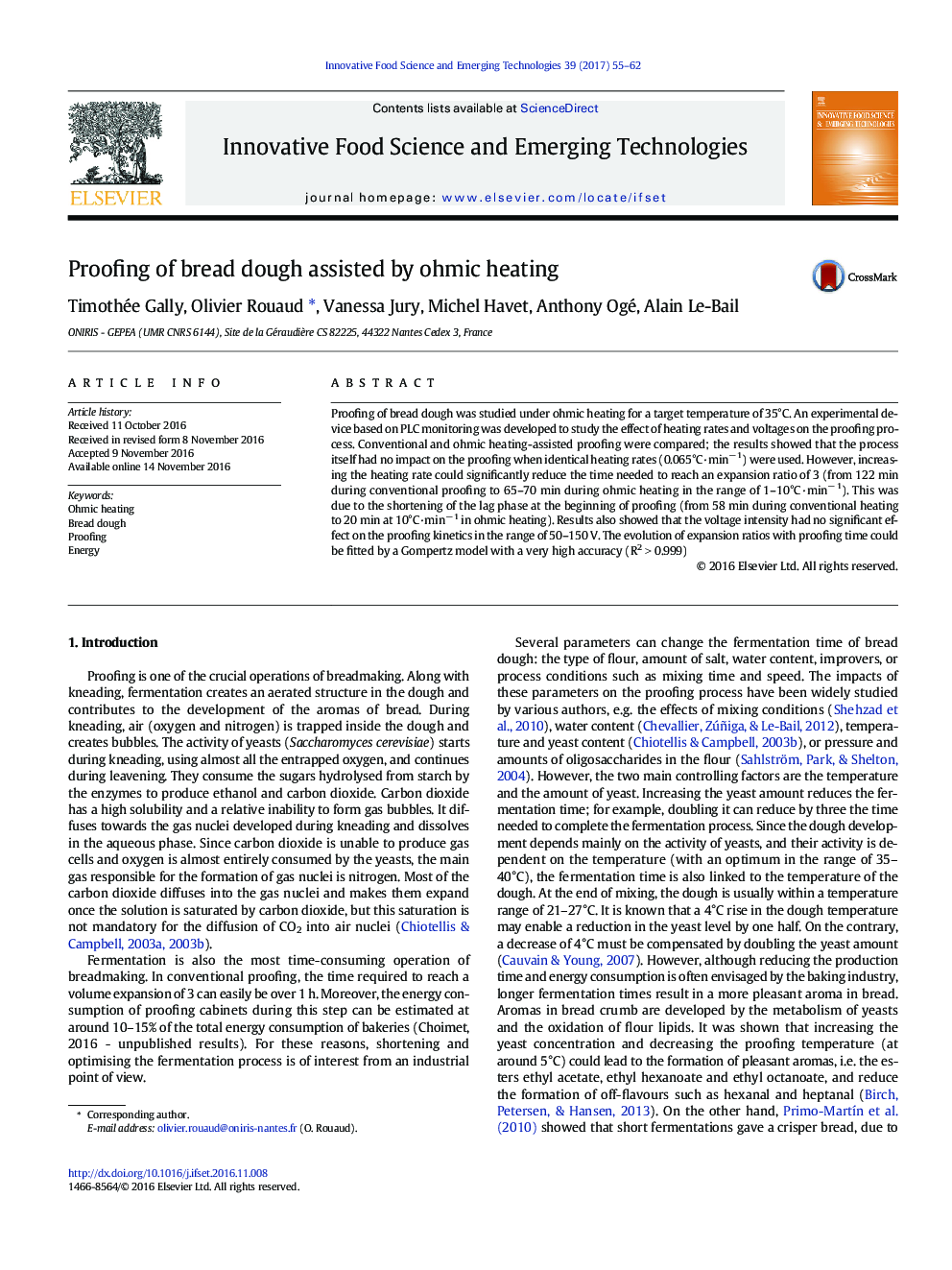| Article ID | Journal | Published Year | Pages | File Type |
|---|---|---|---|---|
| 5521848 | Innovative Food Science & Emerging Technologies | 2017 | 8 Pages |
â¢Proofing of bread dough assisted by ohmic heating allows the yeasts to quickly reach their temperature activity optimum.â¢Using higher heating rates than that of conventional proofing decreases the proofing time by decreasing the lag phase.â¢Using ohmic heating may lead to lower energy consumption and may be of interest for baking industry.â¢Proofing by ohmic heating leads to lower temperature gradients, meaning a potential increase of the dough quality.â¢Ohmic heating technology can be of interest in the case of proofing dough from low temperatures.
Proofing of bread dough was studied under ohmic heating for a target temperature of 35°C. An experimental device based on PLC monitoring was developed to study the effect of heating rates and voltages on the proofing process. Conventional and ohmic heating-assisted proofing were compared; the results showed that the process itself had no impact on the proofing when identical heating rates (0.065°C·minâ 1) were used. However, increasing the heating rate could significantly reduce the time needed to reach an expansion ratio of 3 (from 122 min during conventional proofing to 65-70 min during ohmic heating in the range of 1-10°C·minâ 1). This was due to the shortening of the lag phase at the beginning of proofing (from 58 min during conventional heating to 20 min at 10°C·minâ 1 in ohmic heating). Results also showed that the voltage intensity had no significant effect on the proofing kinetics in the range of 50-150 V. The evolution of expansion ratios with proofing time could be fitted by a Gompertz model with a very high accuracy (R2 > 0.999)
